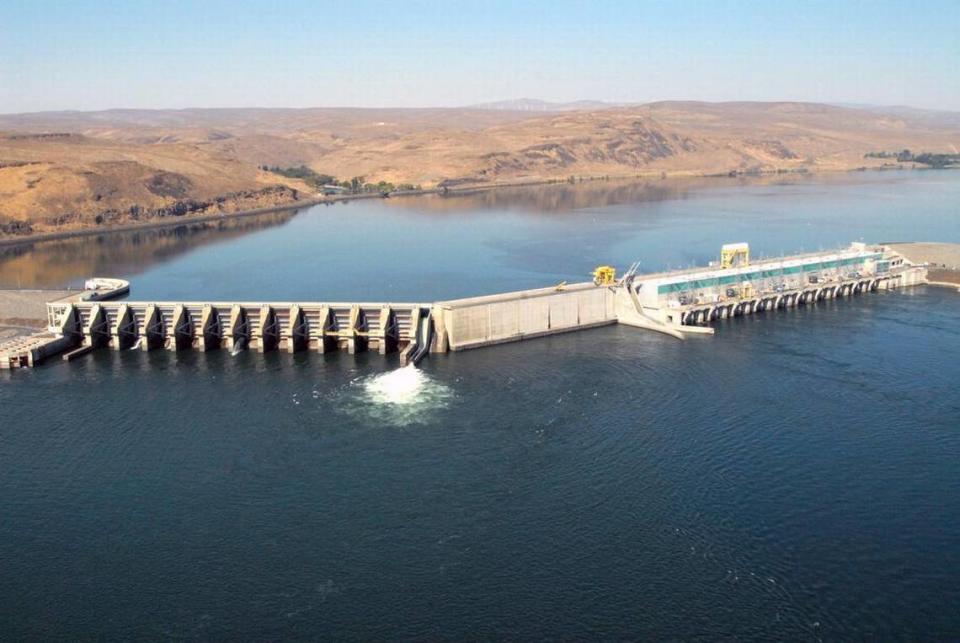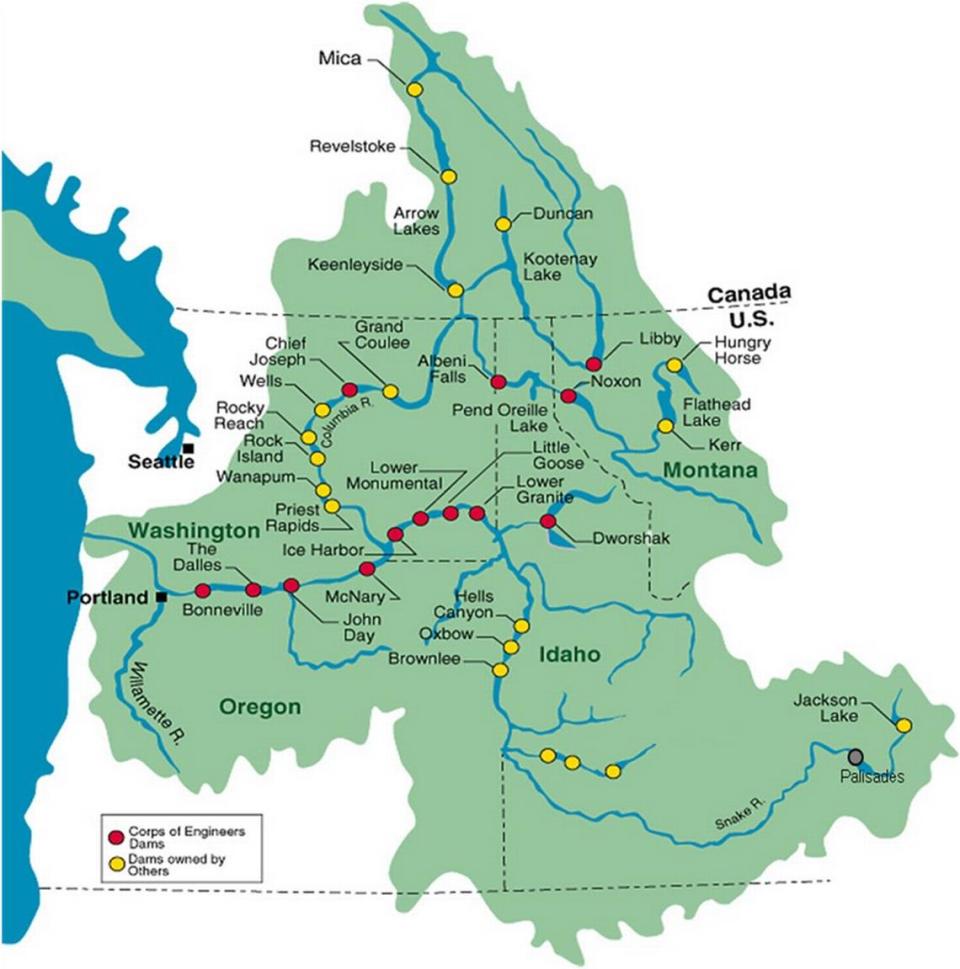U.S., Canada reach vital Columbia River pact. What it means for the dams, electric rates
The United States and Canada have reached an agreement in principle to modernize the 1964 Columbia River Treaty that has governed hydropower operations and management of flood risks on both sides of the international border.
As outlined in the agreement, the treaty will provide a path for the two nations to work together for the next 20 years.
It re-balances energy coordination between the United States and Canada, allowing the United States to keep more clean hydropower energy while giving Canada more opportunities to import from and export to U.S. markets, according to a statement from President Joe Biden posted Thursday morning.
Senior administration officials said in a virtual meeting with news media that the hydropower energy that Canada could claim under the “Canadian entitlement” was valued at about $2.8 billion over 20 years under current market basis. It would drop to $1.5 billion over 20 years under the tentative treaty agreement.
The agreement would result in an immediate 37% reduction in hydropower that the United States delivers to Canada currently and a reduction of 50% by 2033, according to the U.S. Department of State.
The agreement also calls for connectivity between the power grid across the Western U.S. and Canada to avoid blackouts and help in extreme weather that impacts energy systems. It could also facilitate renewable energy transfers between the Bonneville Power Administration and Canadian utilities, according to the State Department.
The U.S. will benefit from pre-planned water storage at Canadian treaty dams to help manage high flows originating in Canada to control flooding in the U.S. Predicable flows also help stabilize shipping on the Columbia River, support recreation and protect efforts to support salmon populations.
When the treaty was originally ratified the United States paid $65 million for construction of storage in Canada.
Under the agreement to continue to benefit from the water storage, the U.S. will pay about $37.6 million a year, with the annual amount increasing with inflation over 20 years.
If Canada decides to use more water storage at treaty dams in British Columbia to meet needs in that country, power transfers to Canada would be further reduced.
The modernized treatment, as proposed, would give more voice to U.S. tribes and Canada’s indigenous nations, including to make recommendations on river flows to benefit endangered salmon, according to the Biden administration.
However, conservation groups criticized the agreement as doing too little to address the Columbia River ecosystem and its salmon and steelhead populations.

Senators react to treaty agreement
Once finalized, the updated treaty must be ratified by the U.S. Senate.
“The United States and Canada reaching an agreement in principle to modernize the Columbia River Treaty regime after over six years of tough negotiations is an important step forward for Washington state and the entire Northwest,” said Sen. Patty Murray, D-Wash., in a statement.
Murray is hopeful that the agreement works for electric ratepayers, tribes, river users and the Washington river ecosystems, she said.
She has pushed for the Biden administration to engage with tribes and organizations in Washington dependent on the Columbia River system and will continue to do so as the treaty modernization is drafted, she said.
Sen. Maria Cantwell, D-Wash., said the agreement in principle to modernize and optimize the hydrosystem for clean power and environmental considerations is a positive step forward.
“The region will need to review and weigh in on the details,” she said. “But I appreciate President Biden and Prime Minister Trudeau reaching a smart agreement to grow clean energy capacity in both countries and create opportunities for future cooperation that could expand electricity generation at a time when the region has big demands for more power.”
She has pushed since the Obama administration to make modernizing the treaty an administration priority.
Columbia River and U.S. economy
The Columbia River and its tributaries generate 40% of U.S. hydropower, irrigate $8 billion in agriculture products and move 42 million tons of cargo annually, according to the Biden administration.
The flood control portion of the treaty expires in September, putting pressure on the Biden administration to reach an agreement with Canada.

The treaty was established 60 years ago to provide the framework for the U.S. and Canada to invest in water storage capabilities in the Columbia River Basin and to increase coordination of flood control and electric generation to benefit both countries.
The Canadian water management also helps the United States provide irrigation water and river navigation.
In return, Northwest electricity users pay a “Canadian Entitlement,” which provides electrical power to Canada.
Environmental groups and tribes had pushed for the environment also to be a priority in the modernized treaty.
Does treaty do enough for fish?
“The health of the Columbia River must become an explicit purpose and priority in a new, modernized treaty,” said Joseph Bogaard of the Save Our Wild Salmon Coalition after the agreement was released. “The Columbia Basin is out of balance today.”
But the treaty agreement continues to emphasize hydropower and flood control over the needs of fish populations, according to a news release from the coalition, the Sierra Club, Earth Ministry and WaterWatch of Oregon.
“The agreement focuses on revenue for BPA (Bonneville Power Administration) and customers while the salmon and Columbia River are left with a status quo that was already inadequate,” said Bill Arthur of the Sierra Club.
Flood control could be done more conservatively under the terms of the new agreement, said senior Biden administration officials Thursday.
“Such changes, if done without careful attention to the health of the river, and without full partnership of residents and communities, could upend vital salmon flows, perpetuate harms to Tribal and non-tribal communities, and limit our region’s options to address warming waters,” Bogaard said.
The State Department said that having a long-term agreement to continue water flows from Canadian reservoirs will support salmon migration throughout the Columbia Basin and that the agreement includes a strategy to bolster flows during dry years.
In addition, both countries are committing to coordinate on studies on salmon reintroduction, which will be led by U.S. tribes and Canadian indigenous nations.


